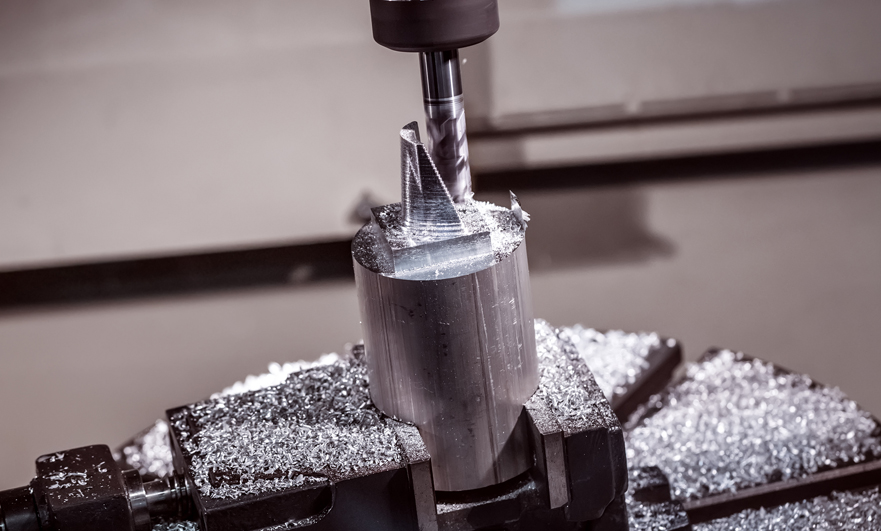15 years one-stop China custom CNC machining parts factory

Hey there I’m VMT Sam!
With 25 years of CNC machining experience we are committed to helping clients overcome 10000 complex part-processing challenges all to contribute to a better life through intelligent manufacturing. Contact us now
 139 |
Published by VMT at Dec 27 2021
139 |
Published by VMT at Dec 27 2021
At a glance, aluminum and stainless steel CNC machining parts look very similar. They can be used in decorative ornaments and provide a certain level of corrosion resistance that can be found almost anywhere you see it.
What is aluminum?
Aluminum (Al) is a soft metal with a silver gray color. It has a shiny appearance. Aluminum is lighter than other metals. It is malleable, that is, it can be deformed under pressure. Because of these characteristics, aluminum is used in aircraft manufacturing.
Aluminum is highly resistant to corrosion because it can form a protective layer and oxidize to aluminum oxide on its surface. In addition, it is a good conductor of heat and electricity. The content of ductile aluminum is high, which means that aluminum is easily melted and drawn into a linear structure. Aluminum foil is impermeable even if it is thin.
Aluminum ore is called bauxite. The bauxite is purified into a white powder, namely alumina. Extract aluminum metal from alumina. Electrolysis technology is used for extraction. First, the alumina is melted so that electricity can pass through it. Due to the high melting point of alumina, high temperature is required. Therefore, these technologies are expensive. However, we can mix alumina with cryolite so that we can melt alumina at a lower temperature instead of melting alumina.
What is stainless steel?
Stainless steel is an iron alloy containing about 10% chromium. Chromium is added to this metal alloy to protect it from corrosion when exposed to oxygen and moisture. Chromium forms a thin oxide on the metal surface. This metal oxide can prevent the surface from rusting.
According to the microstructure of the alloy, there are four main types of stainless steel.
Ferritic stainless steel
Austenitic stainless steel
Duplex stainless steel
Martensitic stainless steel

Which is stronger? Stainless steel or aluminum?
Compared with similar shape, thickness or design, stainless steel always provides greater strength than aluminum.
An effective way to compare this is to observe the tensile strength of each material.
Tensile strength refers to the fracture resistance of a material under tension. The exact number will vary depending on the alloy in use.
The tensile strength of stainless steel CNC machining parts is generally around 515 megapascals (MPa), and in some cases can be as high as 1300 megapascals (MPa).
The tensile strength of aluminum CNC machined parts starts at 100 megapascals (MPa) and peaks at about 400 megapascals (MPa).
Through processing, both alloys can see a further increase.
However, purely based on potential, stainless steel CNC machining parts will always win when high strength is a priority.
So which metal is most suitable for CNC machining parts?
Ultimately, as with most metal choices, there is not always an obvious right or wrong choice between stainless steel and aluminum CNC machined parts. Stainless steel has excellent corrosion resistance, easy maintenance and sufficient strength, and is an ideal choice in a wide range of occasions. Even better, having a large number of points can make it easier for you to reduce any weaknesses and enjoy lasting performance.
If you are not sure where to start, please consider the following:
1. Aluminum provides rust-proof and weight-saving strength and general corrosion resistance.
2. Stainless steel provides excellent corrosion resistance and tensile strength at the expense of increased weight.
3. When dealing with heat, stainless steel provides better heat resistance, while aluminum provides better thermal conductivity. However, the low melting point of aluminum makes it unsuitable for high temperature applications.
4. Welding stainless steel is much easier than welding aluminum due to these thermal characteristics.
5. If you are looking for a light option to conduct electricity, aluminum provides a good balance of conductance and price.
6. When dealing with complex shapes or extensive forming, aluminum tends to provide more ductility. However, some austenitic stainless steels can be formed well without unreasonable strength or effort requirements.
The cost of CNC machined parts of these two metal materials may fluctuate significantly. Be sure to compare grades and prices to get an accurate overall cost concept and highlight the potential cost savings available.
Ready To Start Your Next Project?
Get Instant Quote

Request a Free Quote
Send us a message if you have any questions or request a quote. We will get back to you ASAP!